Potato grow bag DIY: Ever dreamt of harvesting a mountain of potatoes from your own backyard, even if you only have a small patio or balcony? I know I have! Forget sprawling fields; with a simple, space-saving potato grow bag DIY project, you can become a spud-producing superstar.
Growing potatoes in containers isn’t a new fad. In fact, container gardening has been practiced for centuries, with evidence suggesting ancient civilizations used pots and raised beds to cultivate food in limited spaces. This resourceful approach allowed communities to thrive even in urban environments or areas with poor soil. Today, we’re taking that ingenuity a step further with our DIY potato grow bags!
Why should you embrace this particular DIY trick? Well, traditional in-ground potato growing can be labor-intensive, requiring significant digging and hilling. Plus, pests and diseases can wreak havoc on your crop. A potato grow bag DIY offers a controlled environment, easier harvesting (no more back-breaking digging!), and better protection against soil-borne problems. I’m excited to share this easy and rewarding project with you, so let’s get started and turn your small space into a potato paradise!
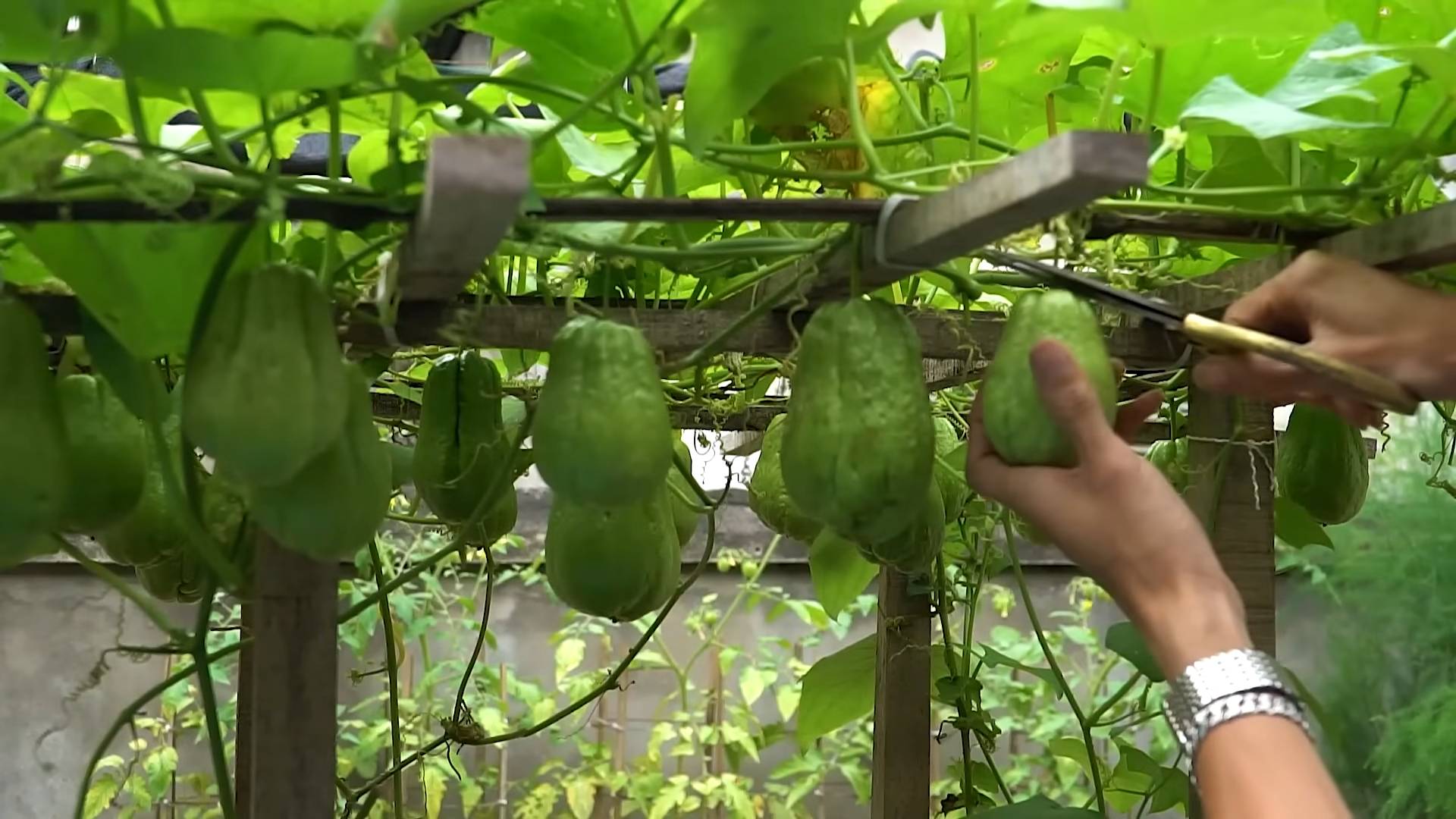
DIY Potato Grow Bag: Bountiful Harvests in Small Spaces!
Hey there, fellow gardening enthusiasts! Are you dreaming of fresh, homegrown potatoes but short on space? Well, I’ve got the perfect solution for you: a DIY potato grow bag! This is a fantastic way to cultivate a potato crop even if you only have a balcony, patio, or small yard. It’s easy, affordable, and incredibly rewarding. Let’s dive in!
What You’ll Need
Before we get started, let’s gather our supplies. This is a pretty straightforward project, so you probably have some of these items lying around already.
* A sturdy bag: This is the most important part! You can use a heavy-duty garden bag, a burlap sack, a large trash bag (the thick kind!), or even an old feed bag. Just make sure it’s at least 2 feet in diameter and 3 feet tall. I personally prefer burlap sacks for their breathability and rustic look.
* Seed potatoes: These aren’t your regular grocery store potatoes. Seed potatoes are specifically grown for planting and are certified disease-free. You can find them at your local garden center or online. Choose a variety that suits your taste and climate. I’m a big fan of Yukon Gold for their creamy texture.
* Potting mix: A good quality potting mix is essential for healthy potato growth. Avoid using garden soil, as it can be too heavy and compact. Look for a mix that’s well-draining and contains plenty of organic matter.
* Compost: Compost is like a superfood for your potatoes! It provides essential nutrients and helps improve soil structure.
* Water: Potatoes need consistent moisture, so make sure you have a reliable water source.
* Optional:
* Scissors or a knife: For cutting the seed potatoes (if necessary).
* Gloves: To keep your hands clean.
* Measuring cup or scoop: To help you measure the potting mix and compost.
* Drainage holes puncher: If your bag doesn’t have drainage holes.
Preparing Your Seed Potatoes
This step is crucial for maximizing your potato yield. You want to encourage your seed potatoes to sprout before planting them in the grow bag.
1. Inspect your seed potatoes: Look for “eyes” or small buds on the surface. These are where the sprouts will emerge.
2. Chitting (optional but recommended): This process encourages sprouting. Place your seed potatoes in a cool, bright location (but not direct sunlight) for a week or two. You can use an egg carton or a shallow tray. The eyes will start to turn green and develop small sprouts.
3. Cutting (if necessary): If your seed potatoes are large (bigger than an egg), you can cut them into smaller pieces, ensuring that each piece has at least one or two eyes. Let the cut pieces dry for a day or two to prevent rotting. This allows a callus to form over the cut surface.
Creating Your Potato Grow Bag
Now for the fun part! Let’s assemble our grow bag and get ready to plant.
1. Prepare the bag: If you’re using a trash bag, make sure to poke several drainage holes in the bottom. This is essential to prevent waterlogging, which can rot your potatoes. If you’re using a burlap sack, drainage is usually less of a concern due to the breathable material.
2. Add the initial soil layer: Pour about 4-6 inches of potting mix into the bottom of the bag. Mix in a generous amount of compost (about 1/4 to 1/3 of the total volume). This will provide a nutrient-rich base for your potatoes.
3. Plant the seed potatoes: Place the seed potatoes on top of the soil layer, with the sprouts facing upwards. Space them evenly, about 8-10 inches apart. If you’re only planting one or two seed potatoes, place them in the center of the bag.
4. Cover the seed potatoes: Add another 4-6 inches of potting mix and compost, completely covering the seed potatoes.
5. Water thoroughly: Water the soil until it’s evenly moist but not soggy.
The “Hilling” Process: The Secret to More Potatoes!
This is where the magic happens! “Hilling” is the process of adding more soil to the grow bag as the potato plants grow. This encourages the plants to produce more potatoes along the buried stem.
1. Wait for the sprouts to emerge: After a week or two, you’ll start to see green shoots emerging from the soil.
2. Add more soil: When the shoots are about 6-8 inches tall, add another layer of potting mix and compost, burying the stems up to the top few leaves.
3. Repeat the process: Continue adding soil every few weeks as the plants grow, always burying the stems up to the top few leaves. This encourages the plant to produce more potatoes along the buried stem.
4. Water regularly: Keep the soil consistently moist, especially during hot weather. Avoid overwatering, as this can lead to rot.
Caring for Your Potato Plants
Now that your potatoes are growing, here are a few tips to keep them happy and healthy.
* Sunlight: Potatoes need at least 6-8 hours of sunlight per day. Place your grow bag in a sunny location.
* Watering: Water deeply and regularly, especially during dry spells. Check the soil moisture by sticking your finger into the soil. If it feels dry an inch or two below the surface, it’s time to water.
* Fertilizing: While compost provides a good base, you can supplement with a balanced organic fertilizer every few weeks. Follow the instructions on the fertilizer package.
* Pest control: Keep an eye out for pests like aphids, potato beetles, and flea beetles. You can use organic pest control methods like insecticidal soap or neem oil.
* Support: As the plants grow taller, they may need some support. You can use stakes or a tomato cage to keep them upright.
Harvesting Your Potatoes
The moment you’ve been waiting for! Harvesting your homegrown potatoes is incredibly satisfying.
1. Timing: Potatoes are typically ready to harvest about 80-100 days after planting, depending on the variety. The foliage will start to turn yellow and die back.
2. Gentle digging: Carefully tip the grow bag onto its side and gently dig through the soil to harvest the potatoes. Be careful not to damage the potatoes with your shovel or trowel.
3. Harvesting early (optional): You can also harvest “new potatoes” earlier in the season, when they are small and tender. Simply reach into the bag and pull out a few potatoes, leaving the rest to continue growing.
4. Curing (optional): If you plan to store your potatoes for a longer period, you can cure them by spreading them out in a cool, dark, and well-ventilated place for a week or two. This helps to toughen the skins and prevent rotting.
Troubleshooting
Even with the best care, you might encounter a few challenges along the way. Here are some common problems and how to address them.
* Yellowing leaves: This could be a sign of overwatering, underwatering, nutrient deficiency, or disease. Check the soil moisture and adjust your watering accordingly. Fertilize with a balanced organic fertilizer.
* Potato blight: This is a fungal disease that can cause brown spots on the leaves and potatoes. Remove infected foliage and treat with a fungicide.
* Pests: As mentioned earlier, keep an eye out for pests and use organic pest control methods.
* Small potatoes: This could be due to insufficient sunlight, water, or nutrients. Make sure your plants are getting enough sunlight and water, and fertilize regularly.
Choosing the Right Potato Variety
Selecting the right potato variety is crucial for success. Consider your climate, growing season, and personal preferences. Here are a few popular choices:
* Yukon Gold: A classic all-purpose potato with a creamy texture and buttery flavor.
* Red Pontiac: A red-skinned potato with a firm texture, great for boiling and salads.
* Russet Burbank: The classic baking potato, with a fluffy texture.
* Fingerling Potatoes: These come in various colors and have a unique, nutty flavor. They are great roasted or in salads.
Maximizing Your Harvest
Want to get the most out of your potato grow bag? Here are a few extra tips:
* Rotate your crops: Avoid planting potatoes in the same location year after year. This can help prevent soilborne diseases.
* Use companion planting: Plant beneficial herbs and flowers near your potatoes to attract pollinators and repel pests. Marigolds, basil, and nasturtiums are good choices.
* Mulch: Apply a layer of mulch around the base of
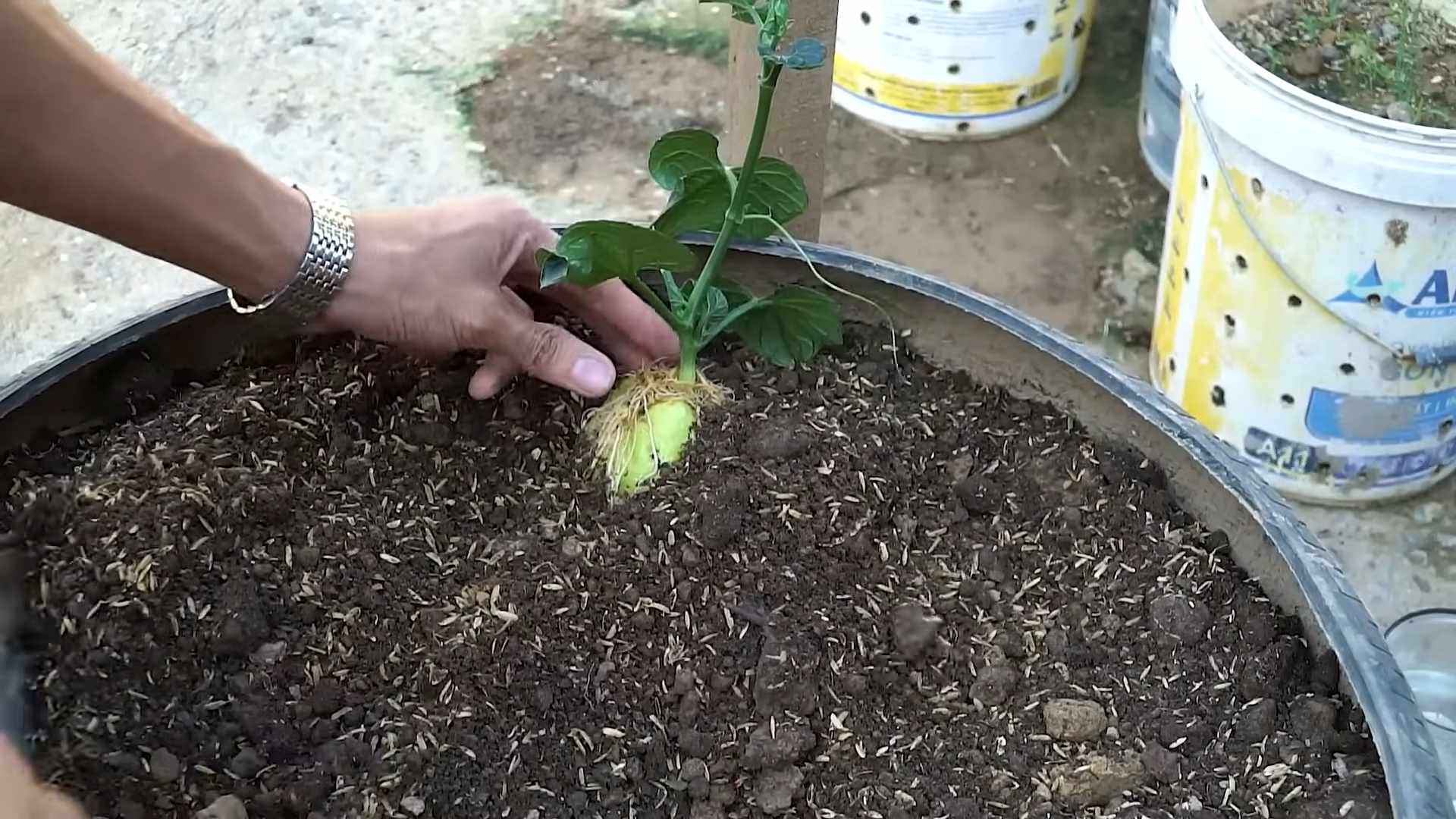
Conclusion
So, there you have it! Creating your own potato grow bag is not just a fun weekend project; it’s a gateway to fresh, homegrown potatoes right at your doorstep, even if you’re short on space. We’ve walked you through the simple steps, highlighting how accessible and rewarding this DIY project can be. Forget lugging heavy bags from the store or wondering about the origins of your produce. With a little effort and some readily available materials, you can cultivate your own supply of delicious, nutrient-rich potatoes.
Why is this a must-try? Because it empowers you to take control of your food source. You know exactly what goes into growing your potatoes – no hidden pesticides or questionable practices. Plus, the satisfaction of harvesting your own crop is unparalleled. Imagine the taste of freshly dug potatoes, steamed and drizzled with butter, knowing you nurtured them from seed to table. It’s a truly rewarding experience.
But the beauty of this DIY potato grow bag doesn’t stop there. It’s incredibly versatile! Feel free to experiment with different potato varieties. Russets, Yukon Golds, fingerlings – the possibilities are endless. You can also adjust the size of your grow bag to suit your available space and desired yield. Consider adding companion plants like marigolds or basil around the base of the bag to deter pests and attract beneficial insects.
For a more decorative touch, use burlap or other aesthetically pleasing fabrics for your grow bag. You can even paint or stencil designs onto the fabric to personalize it and make it a focal point in your garden or balcony. If you live in a particularly hot climate, consider using a lighter-colored fabric to reflect sunlight and prevent the soil from overheating.
Don’t be afraid to get creative with your soil mix, too. While the recipe we provided is a great starting point, you can tailor it to your specific needs and preferences. Adding compost, worm castings, or other organic amendments will further enrich the soil and promote healthy potato growth.
We wholeheartedly encourage you to give this DIY potato grow bag a try. It’s an affordable, sustainable, and incredibly satisfying way to grow your own food. And the best part? You don’t need a sprawling garden to do it. A sunny balcony, patio, or even a small deck will suffice.
Once you’ve harvested your first crop of homegrown potatoes, we’d love to hear about your experience! Share your photos, tips, and variations in the comments below. Let’s build a community of DIY gardeners and inspire others to embrace the joy of growing their own food. This **potato grow bag DIY** project is more than just a recipe; it’s an invitation to connect with nature, nourish your body, and cultivate a more sustainable lifestyle. So, grab your supplies, get your hands dirty, and prepare to be amazed by the bounty you can create. Happy growing!
Frequently Asked Questions (FAQ)
What kind of potatoes are best for growing in a grow bag?
Almost any variety of potato can be grown in a grow bag, but some tend to perform better than others. Determinate varieties, which produce all their potatoes at the base of the plant, are generally a good choice. These include Yukon Gold, Red Norland, and Irish Cobbler. Indeterminate varieties, which produce potatoes along the stem as it grows, can also be grown in grow bags, but they require more hilling (adding soil to the stem) to encourage potato production. Fingerling potatoes are also a popular choice for grow bags due to their unique shape and flavor. Ultimately, the best variety for you will depend on your personal preferences and local climate. Experiment with different varieties to see which ones thrive in your grow bag.
How often should I water my potato grow bag?
Watering frequency depends on several factors, including the weather, the size of your grow bag, and the type of soil you’re using. Generally, you should water your potato grow bag whenever the top inch of soil feels dry to the touch. During hot, dry weather, you may need to water daily, while during cooler, wetter weather, you may only need to water every few days. When you water, water deeply, ensuring that the entire soil volume is moistened. Avoid overwatering, as this can lead to root rot. A good rule of thumb is to water until you see water draining from the bottom of the bag.
How much sunlight do potato plants need?
Potato plants need at least six hours of direct sunlight per day to thrive. Choose a location for your grow bag that receives ample sunlight throughout the day. If you live in a particularly hot climate, you may want to provide some afternoon shade to prevent the plants from overheating. Insufficient sunlight can result in weak, leggy plants and reduced potato production.
When is the best time to plant potatoes in a grow bag?
The best time to plant potatoes in a grow bag is in early spring, after the last frost. You can start chitting (sprouting) your seed potatoes a few weeks before planting to give them a head start. To chit potatoes, place them in a cool, bright location for a few weeks, allowing them to develop short, green sprouts. Plant the sprouted potatoes with the sprouts facing upwards.
How do I know when my potatoes are ready to harvest?
Potato plants typically take 70-100 days to mature. You can start harvesting “new potatoes” (small, immature potatoes) a few weeks after the plants flower. To harvest new potatoes, carefully dig around the base of the plant and remove a few potatoes, leaving the rest to continue growing. For mature potatoes, wait until the foliage starts to die back and turn yellow. This indicates that the potatoes have stopped growing and are ready to be harvested. To harvest mature potatoes, carefully dig up the entire plant and remove the potatoes from the soil.
Can I reuse the soil from my potato grow bag?
Yes, you can reuse the soil from your potato grow bag, but it’s important to amend it before planting again. Potatoes are heavy feeders, so the soil will likely be depleted of nutrients after a growing season. Add compost, worm castings, or other organic amendments to replenish the nutrients. You may also want to sterilize the soil to kill any potential pests or diseases. You can do this by baking the soil in the oven at 200 degrees Fahrenheit for 30 minutes or by solarizing it in a black plastic bag for several weeks.
What are some common problems I might encounter when growing potatoes in a grow bag?
Some common problems you might encounter when growing potatoes in a grow bag include pests, diseases, and nutrient deficiencies. Pests such as aphids, potato beetles, and flea beetles can damage potato plants. Diseases such as early blight, late blight, and potato scab can also affect potato growth. Nutrient deficiencies can result in stunted growth, yellowing leaves, and reduced potato production. To prevent these problems, choose disease-resistant potato varieties, practice good sanitation, and provide your plants with adequate nutrients.
Can I grow other vegetables in a grow bag besides potatoes?
Yes, you can grow many other vegetables in a grow bag besides potatoes. Tomatoes, peppers, eggplants, cucumbers, and zucchini are all good choices for grow bags. When choosing vegetables to grow in a grow bag, consider their size, growth habits, and nutrient requirements. Some vegetables may require larger grow bags or more frequent watering than others.
How do I store my harvested potatoes?
Store your harvested potatoes in a cool, dark, and dry place. A root cellar is ideal, but a basement or garage will also work. Avoid storing potatoes in the refrigerator, as this can cause them to develop a sweet taste. Store potatoes away from apples and bananas, as these fruits release ethylene gas, which can cause potatoes to sprout prematurely. Properly stored potatoes can last for several months.
What if I don’t have access to seed potatoes?
If you don’t have access to seed potatoes, you can try growing potatoes from store-bought potatoes. However, it’s important to choose organic potatoes, as conventional potatoes are often treated with chemicals to prevent sprouting. Cut the potatoes into pieces, ensuring that each piece has at least one “eye” (bud). Allow the cut pieces to dry for a few days before planting to prevent rot. Keep in mind that potatoes grown from store-bought potatoes may not be true to type, meaning they may not produce the same variety of potato as the parent plant.


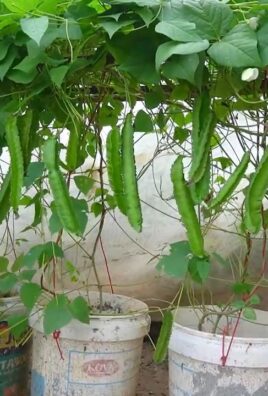
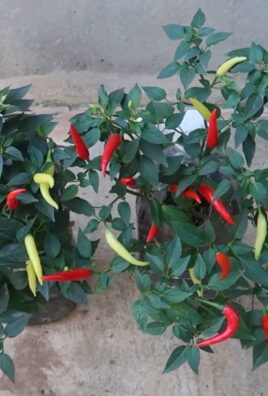
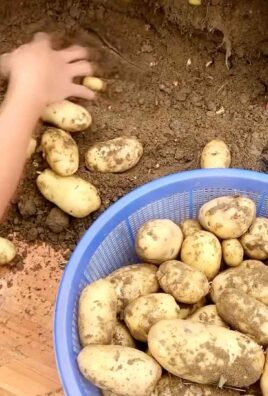
Leave a Comment